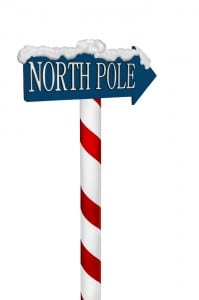 Whether they are called own brands, control brands, custom brands, or house brands, retailers are increasing the shelf space devoted to their own labels. These control brands, or private labels, have both advantages and disadvantages for retailers, suppliers, producers, and consumers.
Whether they are called own brands, control brands, custom brands, or house brands, retailers are increasing the shelf space devoted to their own labels. These control brands, or private labels, have both advantages and disadvantages for retailers, suppliers, producers, and consumers.
They are born out of the chain retailer’s desire to cut out the middleman, or in some cases, several middlemen. This model promises to offer more attractive prices to the consumer while producing more profits for the retailer.
In theory, this seems like a plausible concept. Why even have independent brands? Why pay more for the “packaging?”
Some retailers have been extremely successful with their own custom brands. Whole Food’s 365 brand is a good example, while successes in other categories are mixed. Retailers are learning which categories work for custom brands in what kinds of stores. But they continue to benefit from the advertising and promotion provided by the independent brands their customers demand.
Here are 5 elements of control brands and some considerations:
1. Commoditization.
Do people buy brands? Or do they just want the best price on the commodity behind the label? Part of the custom branding rationale suggests the latter. Certain products, such as food and beverages, and even household and sundry items, are becoming more and more custom branded.
2. Captive Audience.
Do the retailers’ customers shop exclusively at their stores, or do they shop elsewhere as well? Are they more likely to think the custom brand is just a new independent brand but at a better price? They may not find out until they shop elsewhere and can’t find the same custom brand. Shoppers are limited to buying what is on the shelf, and most will not go out of their way to find a brand if it isn’t for sale at their favorite store.
3. Sourcing.
Where does the retailer secure supply for the custom brand? If it’s outsourced, does the supplier get outbid by a competing supplier and lose the contract for 50 cents less? Does it force them to cut corners to meet the price? Does the consistency of custom brands change as a result of annual bidding wars?
4. Advertising.
The point of sale is the most effective place to advertise because it’s where the customer, the product, the money, and the decision all come together. The retailers have the clear advantage here because they control the space allotted for in-store displays. However, shoppers who are loyal to independent brands are less likely to be swayed by well-placed in-store advertising.
5. Quality Control.
Independent brands live or die on the customers’ perception of their quality and value. This constitutes their brand image, and must be delivered consistently over time. As a result, independent brands generally have the advantage of a perception of quality. Custom brands fight the stigma of being just another “generic” label.
The American culture celebrates its colorful range of brands like no other. We have a rich history of great independent brands. Our consumers depend on them and expect to find them at their retail stores. Even though they can make more on their own control brands, retailers must carry the brands that have become essential to their customers
So while it’s a potential threat to independent brands, the jury is still out on the custom brand movement. Just because it’s Christmas, would you stick with a brand you know and trust like Bird’s Eye, or to save a few pennies, would you try your luck with a control brand, like Santa’s North Pole Frozen Peas?
Happy Holidays to all the independent brand producers out there! Thank you for building quality and consistency into your products. We wish you a prosperous New Year!

